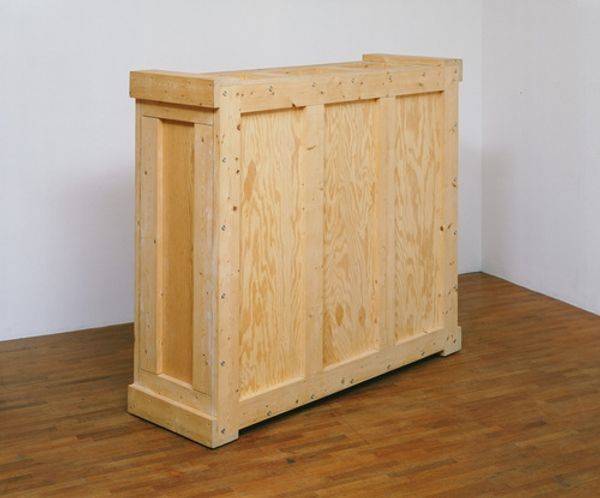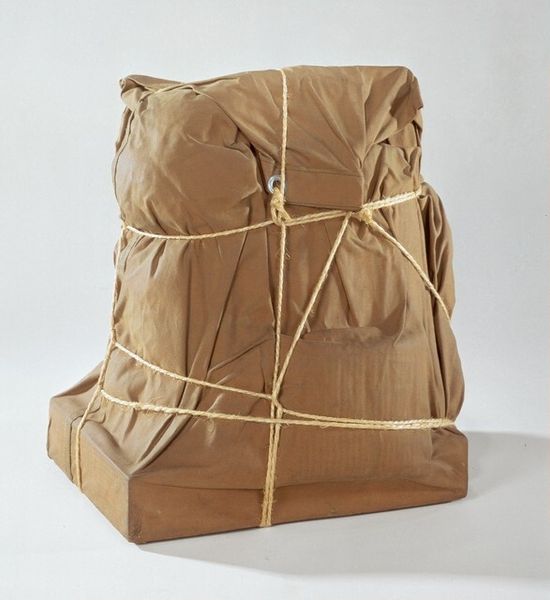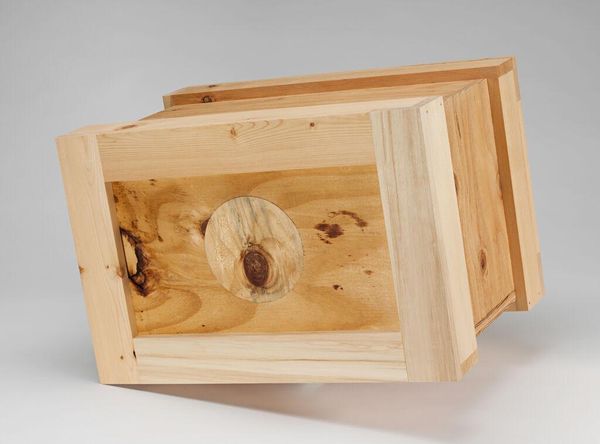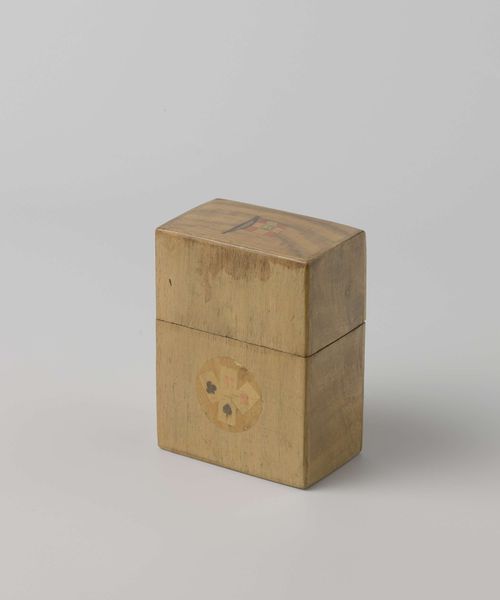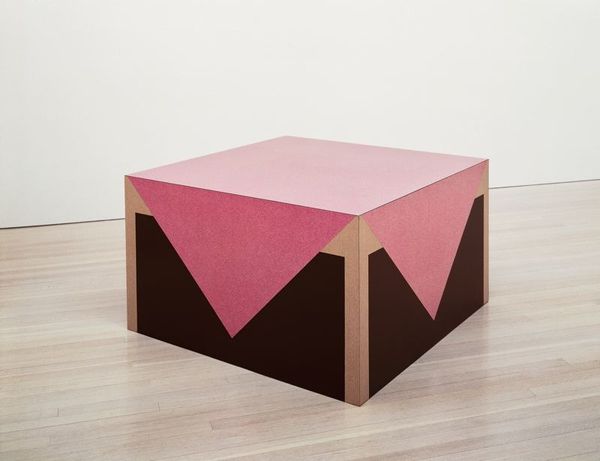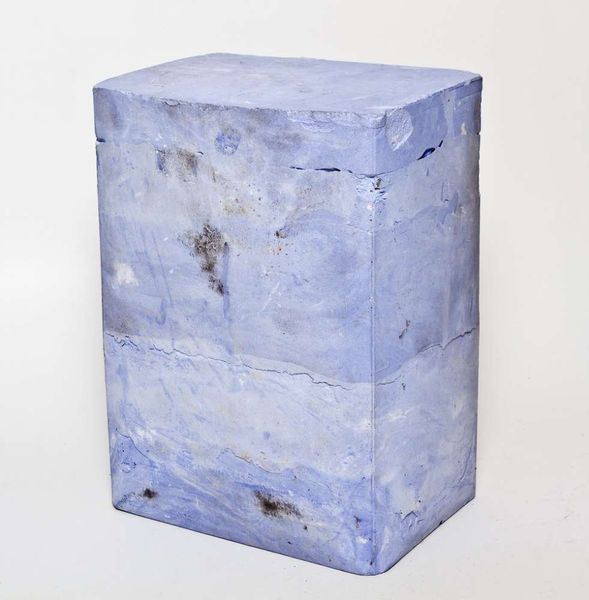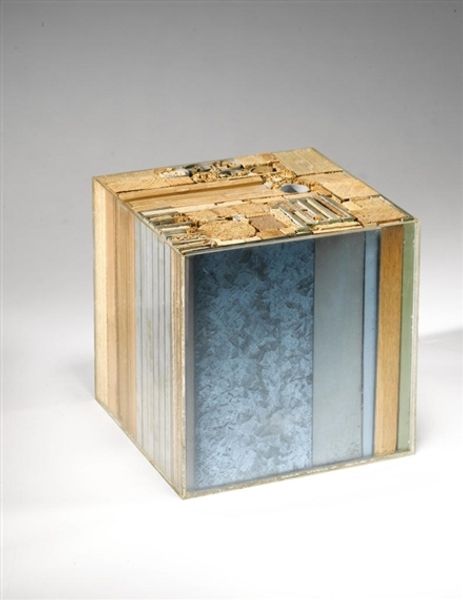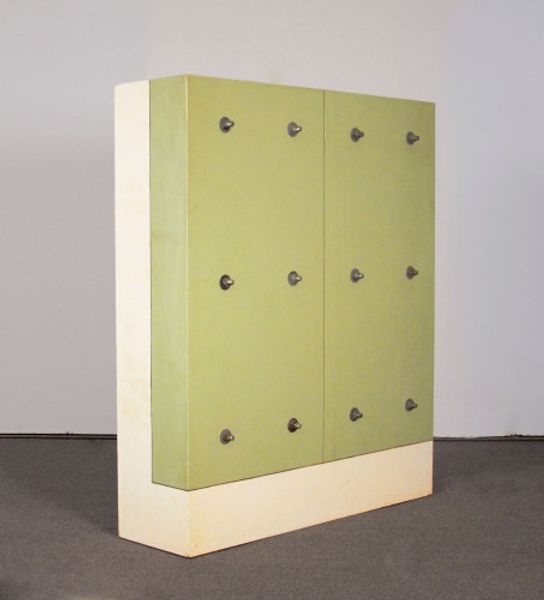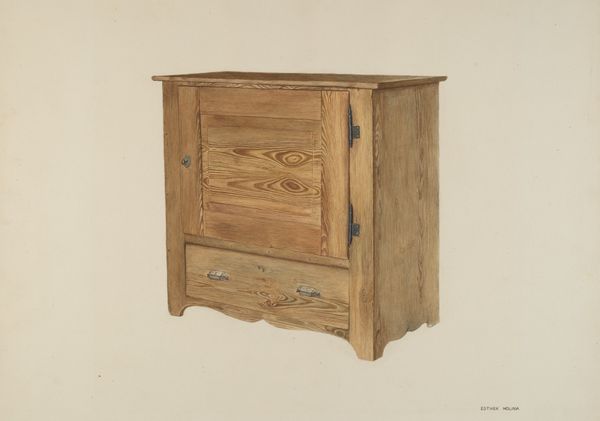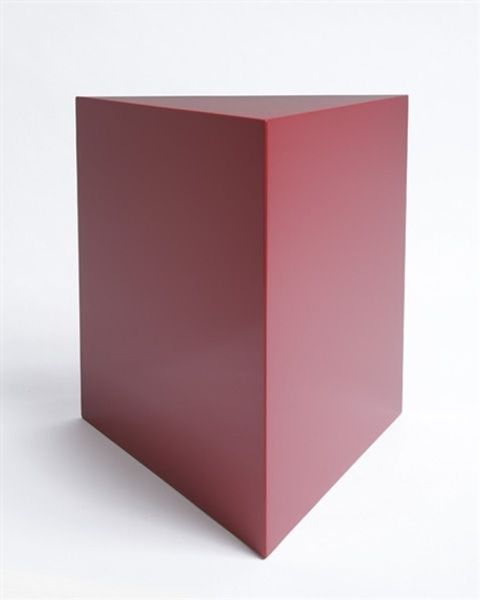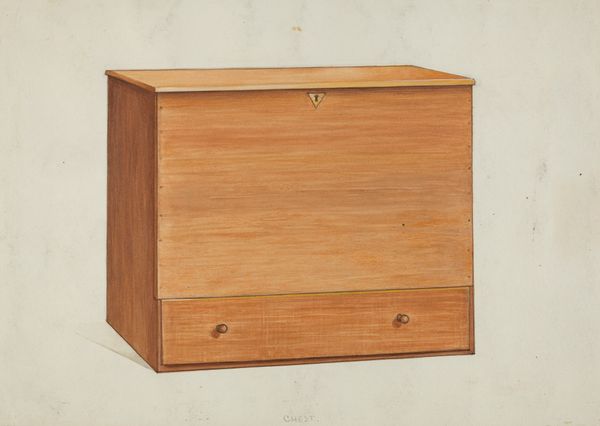
found-object, readymade, appropriation, wood
#
conceptual-art
#
minimalism
#
furniture
#
found-object
#
readymade
#
form
#
appropriation
#
geometric
#
wood
Copyright: Richard Artschwager,Fair Use
Curator: Let’s turn our attention to Richard Artschwager’s "Untitled" piece from 1994, a sculpture employing wood and a found-object aesthetic. Editor: My first impression? Utilitarian. It feels very matter-of-fact, almost stubbornly devoid of obvious artistry at first glance. Is this just… a crate? Curator: It operates on that very tension. Artschwager frequently played with the concept of blurring boundaries. Here, he's challenging the institutional context by presenting what appears to be a commonplace object – a wooden crate, associated with storage and transport – as art. It forces a reevaluation of function versus aesthetics. Editor: Right, and considering this in the socio-political climate of the 90s, appropriation was in full swing. I'm interested in how Artschwager's choice implicates the viewer. Is this commentary on consumerism, the art market as a container for commodified ideas, or both? Who decides what deserves a place inside, literally and figuratively? Curator: Exactly! It's impossible to separate from the history of minimalist sculpture too, but with an added wink. He engages with the legacy of artists like Donald Judd, whose “specific objects” sought to remove all illusion. Artschwager, on the other hand, acknowledges and even amplifies the object's mundane origins while asking us to consider its formal qualities, its very box-iness, with fresh eyes. Editor: I see what you mean. It's less about pure abstraction and more about a pointed awareness of how we assign value. It speaks to our preconceived notions. A crate contains, but it also conceals. The history of art is filled with this kind of “hiding and revealing” narrative. What histories or values are kept safe versus out of view in spaces like a gallery? What narratives are framed and protected, and what histories might have been better left unpacked or deconstructed? Curator: Precisely, and let's not overlook the materiality. The rough-hewn nature of the wood contrasts sharply with the pristine gallery setting, underscoring the socio-economic implications embedded within even the simplest of forms. Editor: I'll never look at a crate the same way. It highlights the silent political role that artworks and artistic spaces take. Thanks! Curator: And thank you, it's these layers of contextual reading that makes Artschwager's deceptively simple intervention so effective.
Comments
No comments
Be the first to comment and join the conversation on the ultimate creative platform.
